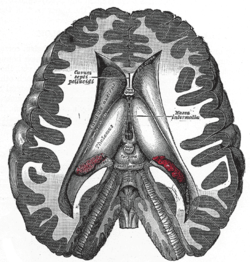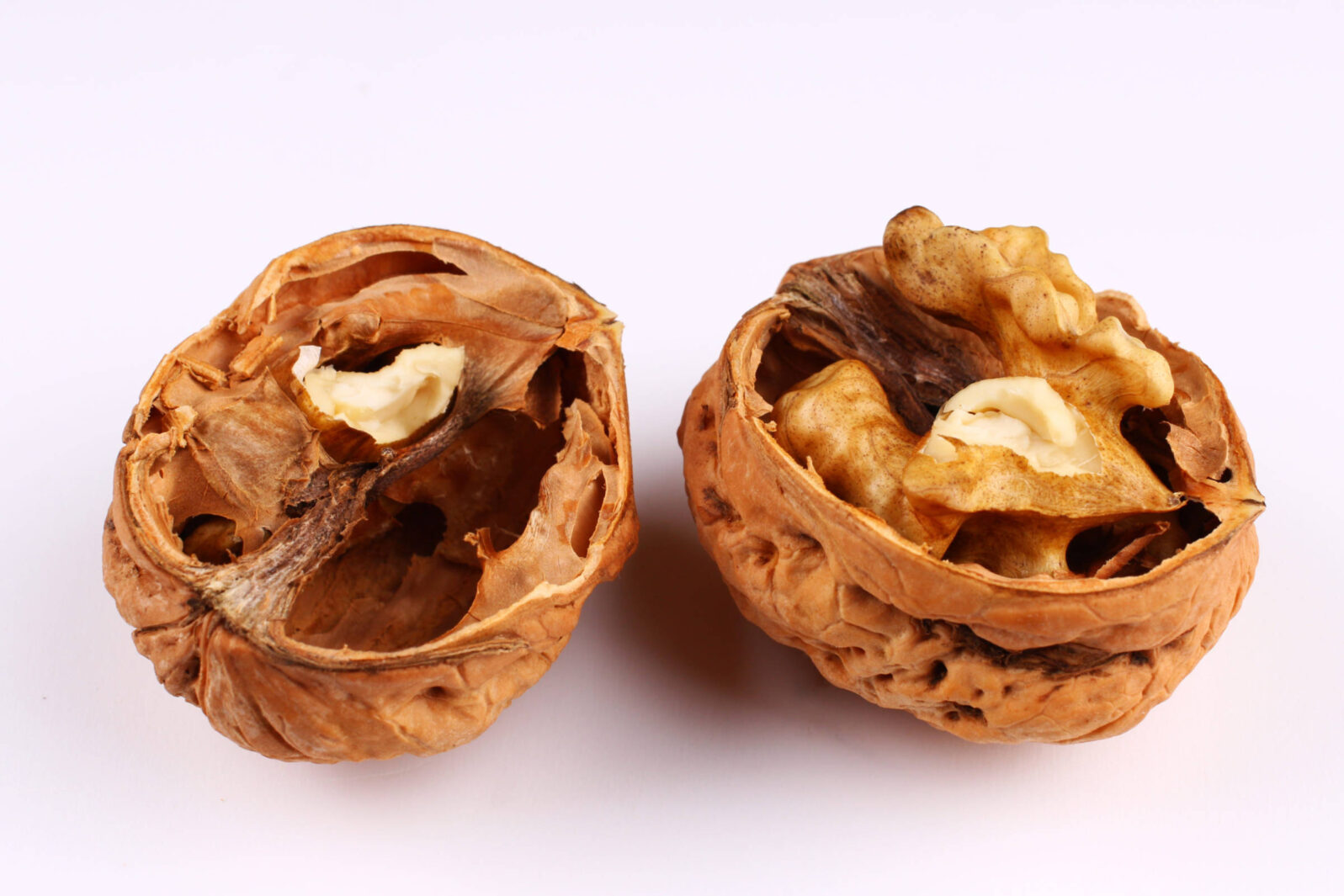My Right Hemisphere Is An Atheist! No, Wait …
In reality, split-brain surgery does not split consciousness in any meaningful senseAtheist neuroscientist V.S. Ramachandran claims in a video at You Tube (Beyond Belief Conference, 2006) that brain hemispheres can have different opinions on the existence of God:
Perhaps it is relevant, in assessing such a bizarre claim, that Dr. Ramachandran also makes a statement about brain surgery that is false.
Corpus callosotomy is the “split brain” operation that I and many other neurosurgeons have performed. It involves cutting the corpus callosum that connects the cerebral hemispheres, in order to treat serious epileptic seizures. He claims that the operation also entails cutting the anterior commissure1 (below) and the massa intermedia. That is not true.

The anterior commissure (above, color emphasis) is a tiny bundle of nerve fibers in the anterior third ventricle that connects the temporal lobes and other parts of the brain. Its function is still the object of much research, but it is not cut during split brain surgery. It is located near a very delicate region of the brain (the hypothalamus) and cutting it would be quite dangerous. It actually touches the columns of the fornices, which are memory tracts and are vital for the formation of new memories.
The massa intermedia (below left, in red) is a variable fiber tract in the third ventricle that connects the right and left thalamus. Its function is unknown, and it too is never deliberately cut, even in split brain surgery.

Keep in mind that Dr. Ramachandran is a leading neuroscientist who studies the mind-brain connection and yet he doesn’t seem to know even the most rudimentary facts about the surgical operations that he uses publicly to argue for materialism.
Next, he claims:
“[the surgery creates] two human beings in one body and one skull… two spheres of consciousness.”
Nonsense. A split brain patient is one human being and has one sphere of consciousness, just like the rest of us. In fact, no difference in consciousness is experienced by the patient or observed by a doctor or scientist examining him. The patient is still one person with one mind.
What is different—and it is very subtle, requiring meticulous testing to identify—is a variable set of disabilities of perceptual integration. These are not “two spheres of consciousness” let alone “two human beings in one skull.” Split brain surgery causes very subtle perceptual changes that are generally not even noticed by the patient but are interesting to neuroscience professionals because they help us understand some aspects of perceptual processing better.
The left hemisphere, for example, processes visual and tactile information from the right side of the visual field and body, and the right hemisphere processes visual and tactile information from the left side of the visual field and body. The left hemisphere (in most people) acts to produce speech, whereas the right hemisphere mediates many non-verbal tasks such as spatial orientation. Neither hemisphere “thinks” or “perceives,” any more than an eye sees or a foot walks. A person thinks and perceives and sees and walks, using his brain and eyes and feet to do so. Neither organs nor parts of organs “think.”
Next, Ramachandran makes a nonsensical claim:
“…Ok you’ve created two people. What about their personalities?”
He describes right and left hemispheres “reading” and “talking,” which is logical nonsense. Brain hemispheres metabolize glucose, generate action potentials, secrete neurotransmitters, etc. Only a person talks. (Attributing the abilities of the whole person to parts of the person is called the mereological fallacy.)
Ramachandran goes on to quip about a series of questions he asked a patient via his right hemisphere (Are you on the moon? Are you in California?, etc.) and the answers he got from the patient (which were correct in those instances). He asked the patient his sex, which he misidentified, and then the patient laughed about it (the right hemisphere has a sense of humor!).
Ramachandran doesn’t tell us if the patient used both sides of his mouth when he laughed. If so, his right hemisphere alone could not have mediated the reply (because the right side of the mouth is innervated only by the left hemisphere of the brain).
Ramachandran next asks the patient’s “right hemisphere”:
“Do you believe in God”?
He says the right hemisphere pointed to “no”, and the left hemisphere pointed to “yes”. Ramachandran then joked that after death the patient’s left hemisphere would go to heaven and his right hemisphere would go to hell(!). Like the patient’s right hemisphere, the atheist audience at the Beyond Belief conference erupted in laughter.
Ramachandran provided no scientific reference for his anecdote, although it is noteworthy that his patient gave contradictory answers as to his sex and had a sharp sense of humor.
He also made no mention of the striking observation, made many years ago by neurosurgeon and neuroscientist Wilder Penfield, (who pioneered seizure surgery) that there are no intellectual seizures. That is to say, there are no seizures of the type that would, for example, make us believe or not believe in God. If the brain gives rise to such thoughts, why do seizures never invoke them?
Unlike Ramachandran’s dubious anecdote, there has been credible research2 on the question of unity of consciousness following split brain surgery:
A new research study contradicts the established view that so-called split-brain patients have a split consciousness. Instead, the researchers behind the study have found strong evidence showing that despite being characterized by little to no communication between the right and left brain hemispheres, split brain does not cause two independent conscious perceivers in one brain.
Universiteit van Amsterdam (UVA), “Split brain does not lead to split consciousness” at ScienceDaily (January 25, 2017)
A good synopsis of the real science on the effects of split brain surgery, which is consistent with my personal experience over 35 years and the experience of the neurosurgical community as a whole, is that split brain surgery causes subtle disabilities of perceptual integration, but does not “split” consciousness in any meaningful sense. It certainly does not create two persons.
In the 4th century B.C., Aristotle argued that perceptual abilities are tightly linked to the body but that abstract thought (much of what we mean by “consciousness” today) is an immaterial ability of the mind and not linked to matter in the same way as perception is. We might say that the brain is necessary and sufficient for perception and that the brain is necessary but not sufficient for higher abstract thought. This observation implies the immateriality of the intellect and will, which cannot be split by splitting the brain.
It is quite remarkable that, anecdotes at atheist conventions aside, modern neuroscience unequivocally supports Aristotle’s ancient view that abstract thought is indivisible and immaterial.
1 Anterior commissure, shown above: Tractography showing anterior commissure on a population-averaged template, 24 May 2018 Source http://brain.labsolver.org/ Authord Yeh, F. C., Panesar, S., Fernandes, D., Meola, A., Yoshino, M., Fernandez-Miranda, J. C., … & Verstynen, T. (2018). Population-averaged atlas of the macroscale human structural connectome and its network topology. NeuroImage, 178, 57-68. CC BY-SA 4.0.
2 The paper is open access: Yair Pinto, David A. Neville, Marte Otten, Paul M. Corballis, Victor A.F. Lamme, Edward H.F. de Haan, Nicoletta Foschi, Mara Fabri. Split brain: divided perception but undivided consciousness. Brain, January 2017 DOI: 10.1093/brain/aww358
Further reading:
Yes, split brains are weird, but not the way you think. Scientists who dismiss consciousness and free will ignore the fact that the higher faculties of the mind cannot be split even by splitting the brain in half.
Some people think and speak with only half a brain. A new study sheds light on
how they do it.
and
Four researchers whose work sheds light on the reality of the mind The brain can be cut in half, but the intellect and will cannot, says Michael Egnor. The intellect and will are metaphysically simple.
